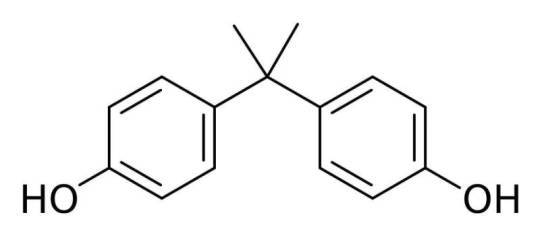#bisphenols
Text
Do people know most paper receipts are harmful to their health?
I'm going to get up on my soapbox for a minute, but do people realize how pretty much everyone is being overloaded with endocrine disruptors like BPA/BPS on a near-daily basis??
I don't think many people understand that ever since most of the world transitioned to thermal paper receipts (cheaper than ink), almost every receipt you handle from the gas station to the grocery store to the Square terminal printer at the local co-op is coated with Bisphenol-A (BPA) or its chemical cousin Bisphenol-S (BPS).
These chemicals have not only been proven to cause reproductive harm to human and animals, they've also been linked to obesity and attention disorders.
Not sure if your receipt is a thermal receipt? If you scratch it with a coin and it turns dark, it's thermal.
BPA/BPS can enter the skin to a depth such that it is no longer removable by washing hands. When taking hold of a receipt consisting of thermal printing paper for five seconds, roughly 1 μg BPA is transferred to the forefinger and the middle finger. If the skin is dry or greasy, it is about ten times more.
Think of how many receipts you handle every day. It's even worse for cashiers and tellers, who may handle hundreds in a single shift. It is also a class issue, since many people who work retail and food service are lower-income and will suffer worse health consequences over time from the near-constant exposure.
Not only that, receipts printed with thermal ink are NOT recyclable, as they pollute the rest of the paper products with the chemicals.
People don't know this and recycle them anyway, so when you buy that "green" toilet paper that says "100% recycled"? Yup, you are probably wiping your most sensitive areas with those same chemicals (for this reason, I buy bamboo or sugarcane toilet paper as a sustainable alternative to recycled paper).
This page from the Minnesota Pollution Control Agency has some good links if you want to learn more.
As consumers, we need to demand better from our businesses and from our governments. We need regulation of these chemicals yesterday.
If you are a buyer or decision-maker for a business, the link above also contains a shortlist of receipt paper manufacturers that are phenol-free.
If you work at a register, ask customers if they want a receipt. If they don't and you can end the transaction without printing one, don't print one!
As a consumer, fold receipts with the ink on the inside, since that's where the coating is. Some more good tips here.
And whatever you do, DO NOT RECYCLE THERMAL RECEIPTS
#i realized the other day that lots of ppl i talked to had no idea this was even a thing#important psa#demand more from your retailers and governments#environment#bisphenols#bpa free#bpa/bps#retail#food service#shopping#working class#capitalism#endocrine disruptors#endocrine disorders#adhd#eco lifestyle#environmental pollution#pollution#toxic chemicals#reproductive health#science#health#environmentalism#eco conscious#human health#consumer goods#consumer awareness#green living#green business#ecofriendly
160 notes
·
View notes
Text
The number of kids being diagnosed with autism spectrum disorder ( ASD) and attention deficit hyperactivity disorder ( ADHD) has risen sharply in recent decades, and a new study points to the common plastic additive bisphenol A (BPA) as a potential reason why.
BPA is used in a lot of plastics and plastic production processes, and can also be found inside food and drink cans. However, previous research has also linked it to health issues involving hormone disruption, including breast cancer and infertility.
In this new study, researchers from Rowan University and Rutgers University in the US looked at three groups of children: 66 with autism, 46 with ADHD, and 37 neurotypical kids. In particular, they analyzed the process of glucuronidation, a chemical process the body uses to clear out toxins within the blood through urine.
The research found that kids with ASD and ADHD couldn't clear out BPA and another similar compound called Diethylhexyl Phthalate (DEHP) with as much efficiency as other kids, potentially leading to longer exposure to their toxic effects.
Continue Reading.
312 notes
·
View notes
Photo

Reduced health risks with new epoxy resin monomer
Epoxy resin monomers used in industry can result in severe contact allergies. Researchers at the University of Gothenburg have now developed a new type of epoxy resin monomer that is far less allergenic and is based on a renewable material. The epoxy resin monomers used today contain residues of the endocrine disruptor Bisphenol A (BPA). The new monomer derived from ordinary sugar is not based on BPA.
Epoxy resin monomers have been used for a long time in the construction industry and, more recently, in the production of the plastics used in wind turbines. The monomer is produced from BPA, which is derived from petroleum. The risk of developing a contact allergy when handling epoxy resin monomers is considerable, and sometimes it is not even enough to wear protective clothing.
"When we started our research, we had three goals. The monomer should be far less allergenic, be based on an easily accessible and renewable starting material, and not based on BPA, which is a known endocrine disruptor," says Kristina Luthman, Professor of Medicinal Chemistry at the University of Gothenburg.
Read more.
#Materials Science#Science#Allergens#Safety#Resin#Epoxy#Bisphenol A#Sugar#Biomaterials#Polymers#University of Gothenburg
22 notes
·
View notes
Photo

Network Failure
October 2021 saw the biggest communications outage in history. Facebook went down. Although the disruption only lasted six hours, it caused worldwide chaos and cost Mark Zuckerberg $6 billion. Researchers have discovered that our brains experience similar network failures in response to bisphenol A. We’re exposed to this chemical every day – it’s in food packaging, shopping receipts, and medical equipment. Here, we see neurons (black) from mice exposed to bisphenol A for two months. Compared to untreated cells, the number of dendritic spines on these neurons decreased by 42%. These long thin structures allow neurons to talk to each other, and are vital for learning and memory. Mice exposed to bisphenol A suffered from anxiety and disrupted memory processing, and the scientists have uncovered how the chemical causes these changes to the brain’s network. This work explains how a ubiquitous chemical can disturb our brains, supporting efforts to regulate its use.
Written by Henry Stennett
Image from work by Sung-Ae Hyun, Moon Yi Ko & Sumi Jang, et al
Department of Advanced Toxicology Research, Korea Institute of Toxicology, KRICT, Daejeon, South Korea
Image originally published with a Creative Commons Attribution 4.0 International (CC BY 4.0)
Published in and on the cover of Disease Models & Mechanisms, July 2022
You can also follow BPoD on Instagram, Twitter and Facebook
15 notes
·
View notes
Text
Bisphenol A (BPA)
BPA is found in polycarbonate plastic which is used for containers to store food and beverages, such as water bottles.
It can be toxic to plants at higher concentrations.
BPA is not normally a problem in food grade plastics but it, as well as lead, has been found in the new fabric pots.
Although BPA is not found in food grade plastic, it has been highly studied and it provides insight into how other plastic chemicals might behave. Due to health concerns, BPA is sometimes replaced with two similar chemicals BPS and BPAF. Testing of all three of these shows that BPA and BPS have a half-life of less than a day. They don’t last long in soil. BPAF has a half-life of about 30 days, which is still short compared to many other chemicals, but not nearly as good as for BPA.
This same study compared two soil types and found that the half-life in soil with a higher organic matter level was 60% higher, showing that it absorbed onto the organic matter which protected it from degradation. Presumable the organic matter also keeps BPA away from roots.
2 notes
·
View notes
Text
9201A/B Epoxy Resin Helps the Development of Wind Power Industry
Epoxy resin is widely used in wind power, electronic and electrical, chemical anti-corrosion, aerospace, rail transportation, machinery manufacturing, ship transportation and other fields due to its strong adhesion, good corrosion resistance, strong electrical insulation and high mechanical properties.
The series of epoxy resin products for wind turbine blades mainly include vacuum infusion resin, hand lay-up resin and mold resin, etc., which have the characteristics of good mechanical properties, fatigue resistance, high and low temperature resistance, excellent mechanical properties, rapid prototyping, and typhoon resistance.
YQXPOLYMER 9201A/B epoxy resin is a product developed to meet the development needs of "lightweight" and "large-scale" wind turbine blades. YQXPOLYMER 9201A/B is an epoxy resin curing agent system specially designed for megawatt wind turbine blades, and it has long operating time and excellent mechanical strength and DNV certified.

Epoxy resin has excellent mechanical properties, chemical stability and corrosion resistance, and can be used as blade structural parts, connectors and coatings for wind power generation. In the supporting structure, skeleton and connectors of the blade, epoxy resin can provide high strength, high stiffness and fatigue resistance to ensure the stability and reliability of the blade. In addition, epoxy resin can also improve the wind shear resistance and impact resistance of the blades, reduce the vibration noise of the blades, and improve wind power generation efficiency.
The application of epoxy resin in wind turbine blade coating is also very critical. By coating epoxy resin on the blade surface, the wear resistance and UV resistance of the blade can be improved, and the service life of the blade can be extended. At the same time, it can also reduce the weight and resistance of the blades and improve the efficiency of wind power generation.
Epoxy resin needs to be used in many aspects of the wind power industry, with a wide range of applications. Currently, among the blade materials for wind power generation, epoxy resin is mainly used in wind turbine blades, the core component of the front end of wind turbines. It is used to make the main beams, shells, webs, blade molds and blade trailing edge bonding.
Due to the development needs of "lightweight" and "large-scale" wind turbine blades, the material properties of epoxy resin can optimize the basic parameters such as strength, stiffness and dynamic fatigue of wind turbine blades, making the wind turbine blades lighter, with longer service life, better maintenance performance and shorter maintenance cycle.
The epoxy resin curing agent contributes particularly crucially to the performance of the wind turbine blade system. Only curing agents with good structural properties can effectively enhance the overall strength of the epoxy resin and thereby enhance the blade strength. In addition, curing agents also have an important impact on process control of blade manufacturing. If the viscosity of the curing agent is too high, it will be difficult to operate. If the reaction speed is too fast, the opening time will be too short. During the curing process of the blade, the reaction will be exothermic and smoke will be emitted, posing risks to the operation. YQXPOLYMER 9201A/B has low mixing viscosity, excellent fiber wettability, long gel time and operable time, low exothermic peak, and excellent comprehensive mechanical properties after curing.
More information or free samples or price quotations, please contact us via email: [email protected] , or voice to us at: +86-28-8411-1861.
#epoxy resin#epoxy resin manufacturer#bisphenol a type epoxy resin#epoxy resin supplier#epoxy resin curing agent system#wind power#megawatt wind turbine blade#wind turbine blade#wind turbine blade coating#curing agent
0 notes
Text
Understanding BPA-Free: What It Means and Why It Matters

Bisphenol A (BPA) is a chemical commonly used in the production of plastic products, such as water bottles, food containers, and even baby bottles. However, studies have shown that exposure to BPA can have harmful effects on human health, including disrupting hormone levels and increasing the risk of certain cancers, diabetes, and obesity.
As a result, many manufacturers have started to produce BPA-free products. In this article, we will explore what BPA-free means, why it matters, and how to identify BPA-free products.

What is BPA?
BPA is a synthetic chemical used in the production of polycarbonate plastics and epoxy resins. These materials are commonly used in the production of a wide range of products, including food and drink containers, eyeglass lenses, and medical equipment. BPA is also used to coat the inside of metal cans to prevent corrosion and contamination.

Why is BPA Harmful?
BPA has been shown to disrupt hormone levels in the body, particularly estrogen. This can have a range of negative health effects, including an increased risk of breast and prostate cancer, infertility, and obesity. BPA has also been linked to an increased risk of diabetes, cardiovascular disease, and developmental disorders in children.

What Does BPA-Free Mean?
BPA-free refers to products that do not contain bisphenol A. Instead, these products are made from alternative materials that do not leach harmful chemicals into food or drink. BPA-free products are often made from materials such as glass, stainless steel, or plastics that are free of BPA and other harmful chemicals.

How to Identify BPA-Free Products?
Many manufacturers label their products as BPA-free, making it easy for consumers to identify them. Look for labels or packaging that explicitly states that the product is BPA-free. It is worth noting, however, that not all products that are marketed as BPA-free are necessarily safe.

Are BPA-Free Products Safe?
While BPA-free products are generally considered safer than those containing BPA, there is still some debate over their safety. Some studies have suggested that the alternative materials used in BPA-free products may also have negative health effects, particularly if they are heated or used with acidic foods or drinks.
For example, some types of BPA-free plastics have been shown to leach harmful chemicals into food or drink when exposed to high temperatures or acidic foods. Similarly, some types of stainless steel may contain trace amounts of nickel or other metals that can be harmful to people with certain allergies or sensitivities.

Tips for Reducing BPA Exposure in Your Daily Life
In addition to choosing BPA-free products, there are several other steps you can take to reduce your exposure to BPA and other harmful chemicals:
Use glass or stainless steel containers for food and drink storage. These materials are less likely to leach harmful chemicals into your food and drink.
Avoid microwaving plastic containers. Heat can cause plastic to break down and release harmful chemicals into your food.
Choose fresh or frozen foods over canned foods. Many canned foods are lined with BPA-containing materials, which can leach into the food.
Wash your hands frequently. BPA and other chemicals can be found in dust and on surfaces, so washing your hands regularly can help reduce your exposure.
Choose personal care products that are free of BPA and other harmful chemicals. Look for products that are labeled as BPA-free, paraben-free, and phthalate-free.

Conclusion
BPA is a chemical commonly used in the production of plastic products, but exposure to this chemical can have harmful effects on human health. BPA-free products offer a safer alternative, but it is important to choose products from reputable manufacturers and to be aware of the potential risks associated with alternative materials.
By understanding what BPA-free means and how to identify these products, consumers can make informed decisions about the products they buy and use.
If you’re looking for BPA-free eco-friendly water filter jugs in Australia, look no further than Ecobud. We offer a range of high-quality, affordable, and practical products designed to help you positively impact your health and the environment. Call us today at 1300 886 373 to place an order or to learn more about our products and services!
READ MORE >>
#food container#clean water#lifestyle#environmentally friendly#alkaline water#stylish#bpa free#bps free#eco friendly#recyclable#wellness#gentoo lite#water bottle#healthy drinks#healthy drinking#water filter jug#water#health#bisphenol A#label#packaging#safe#allergy#sensitivity#microwave#frozen#fresh#paraben free#phthalate free#safe alternative
0 notes
Text
Scary: Plastic Poison in the Brain
by Dr.Harald Wiesendanger– Klartext
What the mainstream media is hiding
Five grams of microplastics enter our bodies every week. Within two hours of ingestion, the particles penetrate the brain. What are they doing there? A new study raises the worst fears.
No, they are no longer just in fish stomachs, raindrops, or the eternal ice of the Arctic. They are omnipresent and inescapable. We…

View On WordPress
#ADEHP#bisphenol#Blood-brain barrier#endocrine disruptors#Harald Wiesendanger#Limit values#Microplastics#Nanoplastics#Plastic particles
1 note
·
View note
Text
#Bisphenol-A Market#Bisphenol-A Market size#Bisphenol-A Market share#Bisphenol-A Market trends#Bisphenol-A Market analysis#Bisphenol-A Market forecast#Bisphenol-A Market outlook#Bisphenol-A Market overview
0 notes
Text
Seeing as how my post is getting low engagement, I'm curious:
Bonus: reblog with your answer and if you like, your home country.
#i realized the other day that lots of ppl i talked to had no idea this was even a thing#demand more from your retailers and governments#important psa#reblog for a bigger sample size#environment#bisphenols#bpa free#bpa/bps#retail#food service#shopping#working class#capitalism#endocrine disruptors#endocrine disorders#adhd#eco lifestyle#environmental pollution#pollution#toxic chemicals#reproductive health#science#environmental activism#environmental justice#health#environmentalism#eco conscious#human health#consumer goods#consumer awareness
17 notes
·
View notes
Text
Global Bisphenol A Market Is Estimated To Witness High Growth Owing To Growing Demand for Sustainable Packaging

The global Bisphenol A market is estimated to be valued at USD 6,589.69 million in 2021 and is expected to exhibit a CAGR of 6.01% over the forecast period of 2022 to 2030, as highlighted in a new report published by Coherent Market Insights.
A) Market Overview:
Bisphenol A (BPA) is a chemical compound used primarily for the production of polycarbonate plastics and epoxy resins. It is widely used in the packaging industry due to its superior strength, durability, and resistance to heat and chemicals. The demand for BPA in packaging applications is driven by the need for sustainable and eco-friendly packaging materials.
B) Market Key Trends:
One key trend driving the global Bisphenol A market is the increasing demand for sustainable packaging solutions. With growing consumer awareness and environmental concerns, there is a shift towards using packaging materials that are recyclable and have a lower carbon footprint. BPA-based polycarbonate plastics offer excellent recyclability and can be used in a wide range of packaging applications, including bottles, containers, and films. This trend is expected to drive the demand for BPA in the packaging industry.
C) PEST Analysis:
Political: The regulatory landscape plays a crucial role in the Bisphenol A market. Several countries have imposed restrictions on the use of BPA due to concerns over its potential health effects. However, most regulations focus on limiting BPA exposure in food contact materials, while other applications such as electronics and automotive industries remain unaffected.
Economic: The growth of the Bisphenol A market is influenced by economic factors such as GDP growth, disposable income levels, and consumer spending patterns. The increasing population and rising income levels in emerging economies are expected to drive the demand for BPA in various end-use industries.
Social: Changing consumer preferences towards sustainable and eco-friendly products are impacting the Bisphenol A market. Consumers are increasingly conscious of the environmental impact of packaging materials and are opting for products that are recyclable and plastic-free. This trend is expected to drive the demand for sustainable packaging solutions based on BPA.
Technological: Advancements in technology have led to the development of alternative materials to replace Bisphenol A in certain applications. However, BPA continues to be the preferred choice for many industries due to its unique properties such as high strength, durability, and transparency. Technological advancements in the BPA production process have also resulted in improved cost-efficiency and environmental performance.
D) Key Takeaways:
1: The global Bisphenol A market is expected to witness high growth, exhibiting a CAGR of 6.01% over the forecast period, due to increasing demand for sustainable packaging solutions. The need for eco-friendly packaging materials and the unique properties of BPA make it a preferred choice for various applications.
2: The Asia-Pacific region is expected to be the fastest-growing and dominating region in the Bisphenol A market. The region is witnessing rapid industrialization and urbanization, leading to increased demand for packaging materials. Moreover, the presence of key players in the region and favorable government policies are contributing to market growth.
3: Key players operating in the global Bisphenol A market include Chang Chun Group, Covestro AG, Dow, Hexion, Kumho P&B Chemicals Inc., LG Chem, Lihuayi Weiyuan Chemical Co. Ltd, Merck KGaA, Mitsubishi Chemical Corporation, Mitsui Chemicals Corporation, Nan Ya Plastics Industry Co. Ltd, Nantong Stars Synthetic Material Ltd, Nippon Steel Chemical & Material Co. Ltd, PTT Phenol Company Limited, SABIC, Samyang Holdings Corporation, Shanghai Sinopec Mitsui Chemicals Co. Ltd, and Sinopec Mitsubishi Chemical Polycarbonate (Beijing) Co. Ltd. These companies are focusing on product development, strategic partnerships, and expanding their production capacities to meet the growing demand for BPA in various end-use industries.
#Coherent Market Insights#Specialty and Fine Chemicals#Bisphenol A#Bisphenol A Market#advanced materials
0 notes
Text
HBPA Epoxy Resin Market: Trends and Opportunities in Electrical and Electronics Coatings
The epoxy resin HBPA (hexabromocyclododecane bisphenol A) is created by reacting bisphenol A with hexabromocyclododecane. It is a flame-resistant resin that is widely employed in a variety of industries such as electronics, aerospace, automotive, and construction. HBPA epoxy resin is primarily utilized as a matrix material in composite materials, which are used in high-performance applications…

View On WordPress
#Global HBPA Epoxy Resin market#HBPA Epoxy Resin#HBPA Epoxy Resin business research report#HBPA Epoxy Resin Industry Trends#HBPA Epoxy Resin market#HBPA Epoxy Resin market Analysis#HBPA Epoxy Resin Market Overview#HBPA Epoxy Resin market Share#HBPA Epoxy Resin Price#HBPA Epoxy Resin research insights#HBPA Epoxy Resin Research Report#Hydrogenated Bisphenol-A Epoxy Resin Market
0 notes
Photo

What is BPA and why is it in so many plastic products?
Bisphenol A, or BPA, is a chemical widely used to make hard, clear plastics. It is an endocrine disruptor that has been linked to many negative health effects, including cardiovascular diseases and diabetes. In 2013, the U.S. government banned its use in baby products that come into contact with food, like bottles or the packaging of infant formula.
At the time, the U.S. Food and Drug Administration concluded that some exposure was safe for adults. But other health agencies, including the European Food Safety Authority, have concluded that the levels of BPA the FDA considers safe may have adverse health effects for adults as well.
In early June 2022, the FDA signaled that it is reconsidering what amount of exposure to BPA is safe for adults, announcing that it would reconsider its guidance on the use of BPA in plastics that come into contact with food.
As a synthetic polymer chemist, I think a lot about how to design new polymers, with particular focus on how to do so sustainably. It's natural to wonder why companies don't simply replace BPA with another chemical if health is such a concern. The secret to what makes BPA such an irreplaceable ingredient in plastics is the same thing that leads to its health risks—the molecule's chemical structure.
Read more.
48 notes
·
View notes
Text
Potential health risks of BPA
Bisphenol A (BPA) is a chemical used in the production of a wide range of consumer products, including plastic containers, thermal paper, and certain types of food packaging. However, there are growing concerns about its potential health risks and its effects on the human body. Here are some more details about the potential dangers of BPA:
Increased risk of heart disease: Studies have shown that…
View On WordPress
0 notes
Text
Studie: Mütterliches Bisphenol A und Fehlgeburtsrisiko - ReferenzLathi RB, Liebert CA, Brookfield KF, et al. Konjugiertes Bisphenol A im mütterlichen Serum im Zusammenhang mit dem Risiko einer Fehlgeburt. Steril befruchten. 2014;102(1):123-128. Design Retrospektive Kohorte prospektiv gesammelter Serumproben.TeilnehmerInsgesamt wurden 115 schwangere Frau... - #Bisphenol #Fehlgeburtsrisiko #Mütterliches #Studie
0 notes
Text
YQXPOLYMER Epoxy Resin 0614/0614DL were Launched into International Market
April 9, 2024, YQXPOLYMER, a leading manufacturer of Epoxy Resin, PBT, Polycarbonate and other chemicals and comprehensive polymer applications provider is pleased to launch its 0614/0614DL epoxy resin worldwide. To expand its business operations, YQXPOLYMER is now open to exploring partnerships with like-minded organizations, businesses, and individuals interested in the epoxy industry.

YQXPOLYMER 0614/0614DL are diluted liquid epoxy resins, which is manufactured from C12~C14 aliphatic glycidyl ether and bisphenol A epoxy resin.
YQXPOLYMER 0614/0614DL are special low viscosity liquid epoxy resins, which are widely used in Stone adhesive. YQXPOLYMER 0614/0614DL can be used to paste fiberglass mesh on the back of marble to enhance the strength and stability of the stone, prevent the stone from falling off and improve the impact resistance of the stone. Also they are used in Ceramic tile adhesive, Epoxy floor, Road bridge tunnel filling, and so on.
A wide variety of curing agents is available to cure liquid epoxy resins at ambient conditions. The most frequently used are aliphatic polyamines, polyamides, alicyclic amines, cycloaliphatic amines and modified versions of these curing agents. Elevated temperature cures are necessary and long post-cures are required to develop full end properties if anhydrides or catalytic curing agents are employed.
YQXPOLYMER 0614/0614DL Typical Properties

YQXPOLYMER 0614/0614DL Key Features
Low viscosity and strong fluidity, good performance at room temperature, and easier to paint and construct.
It can better penetrate into the surface to be coated or bonded, improving performance stability and durability.
Widely used in Stone adhesive, Ceramic tile adhesive, Epoxy floor, Road bridge tunnel filling, etc.
Packing variety: drums, IBC container, or customization.
YQXPOLYMER 0614/0614DL Typical Applications
This product is suitable for use in applications such as:
• Stone adhesive
• Ceramic tile adhesive
• Epoxy floor
• Building repair adhesive( Road bridge tunnel filling)
• Solventless coatings
• Composite materials
• Liquid molding compounds
YQXPOLYMER is looking for partners, distributors of its epoxy resins products globally. And we provide highly cost-effective products, short lead time, in-time after-sales service, even OEM service.
About YQXPOLYMER
YQXPOLYMER is a leading manufacturer of Epoxy Resin, PBT, Polycarbonate and other chemicals and comprehensive polymer applications provider.
More information or free samples or price quotations, please contact us via email: [email protected] , or voice to us at: +86-28-8411-1861.
#epoxy resin#epoxy resin manufacturer#bisphenol a type epoxy resin#epoxy adhesive#epoxy resin supplier#epoxy floor#tile adhesive#YD-114#Kukdo YD-114E#stone adhesive
0 notes